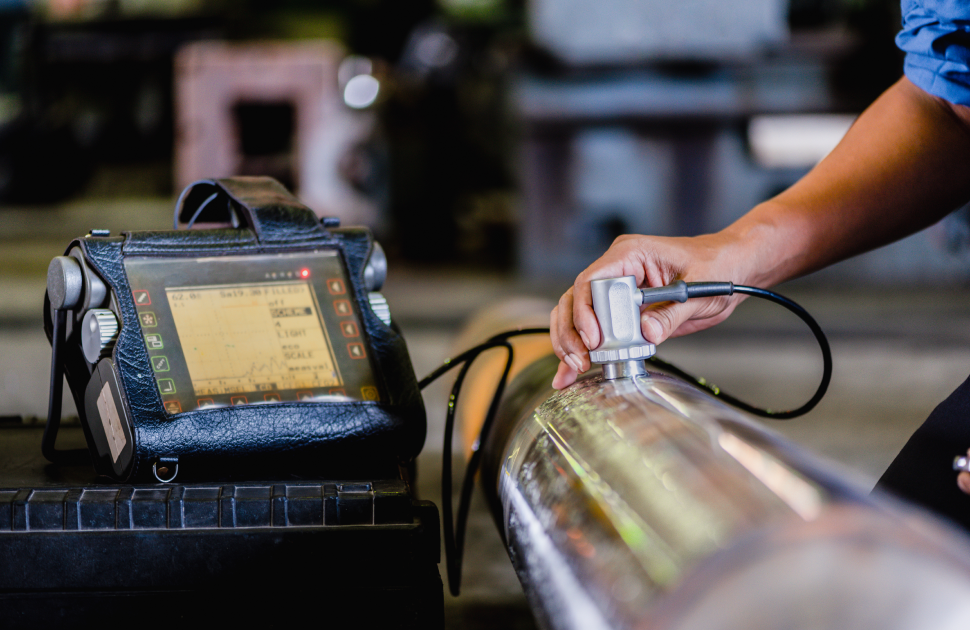Non-destructive Testing (NDT) products are essential for ensuring the safety, reliability, and efficiency of materials, components, and systems across various industries.
These products allow inspectors to evaluate the condition and properties of a material without causing any damage, thereby avoiding potential hazards and reducing costs associated with repairs or replacements.
Ultrasonic Testing equipment is a crucial product in the NDT industry, used to detect internal defects or variations in thickness in a wide range of materials and components.
Ultrasonic transducers generate high-frequency sound waves that travel through the material being inspected.
These waves reflect back to the transducer when they encounter a change in the material's properties, such as a crack or a void.
A flaw detector is then used to process and analyze the signals and provide a visual display of the results.
Radiographic Testing equipment is another essential NDT Product that is used to produce images of internal structures of materials and components.
X-ray generators emit radiation that penetrates through the material being inspected and exposes a film or detector.
The resulting image reveals any internal defects or variations in the material's properties.

Visual Inspection equipment is often used in conjunction with other NDT products to examine the surface of a material or component.
Magnifying devices, borescopes, and fiberscopes are used to visually inspect hard-to-reach areas and small components.
These products provide inspectors with a clear view of the surface of the material or component and can detect surface defects or damage that might not be visible to the naked eye.
Magnetic Particle Testing equipment is a product that detects surface and near-surface defects in ferromagnetic materials.
Magnetic yokes and prods generate a magnetic field that magnetizes the material being inspected.
A particle suspension is then applied to the surface, and the particles are attracted to any magnetic leakage fields caused by defects or cracks.
This allows inspectors to identify any surface defects quickly and accurately.
Liquid Penetrant Testing equipment is used to identify surface-breaking defects in a material or component.
A penetrant, usually a fluorescent or colored liquid, is applied to the surface of the material being inspected.
The penetrant seeps into any surface cracks and an excess is then wiped away. A developer is then applied, which draws out the penetrant, highlighting any surface defects.
Eddy Current Testing equipment is used to detect surface and near-surface defects in non-ferromagnetic materials.
Eddy currents are generated in the material being inspected, and the resulting changes in the electrical conductivity of the material are detected by a probe or coil.
This allows inspectors to identify any surface defects or variations in material properties, such as variations in thickness or material composition.
Thermal imaging equipment is used to detect thermal variations in a material or component, which can indicate defects or variations in thickness.
Thermal cameras detect infrared radiation emitted by the material being inspected and produce an image that shows any variations in temperature across the surface of the material.
This allows inspectors to identify any areas that may be experiencing thermal stress or that may have variations in thickness.
NDT Products are manufactured by specialized NDT equipment manufacturers who design and produce equipment that meets the specific requirements of each industry and NDT method.
These products must meet strict quality standards and undergo rigorous testing and certification processes before they can be used in the field.
NDT product manufacturers also provide ongoing technical support and training for users, ensuring that NDT Inspections are performed accurately and effectively.
In conclusion, NDT Products are essential for ensuring the safety, reliability, and efficiency of materials, components, and systems across various industries.
These products allow inspectors to evaluate the condition and properties of a material without causing any damage, thereby avoiding potential hazards and reducing costs associated with repairs or replacements.
Ultrasonic Testing equipment, radiographic testing equipment, visual inspection equipment, magnetic particle testing equipment, and Liquid Penetrant Testing equipment.
.png)








